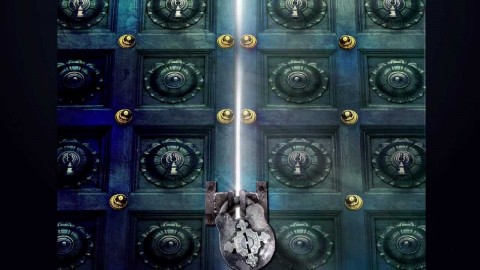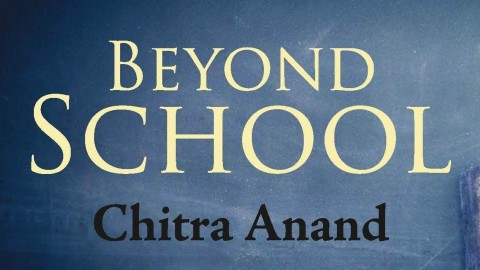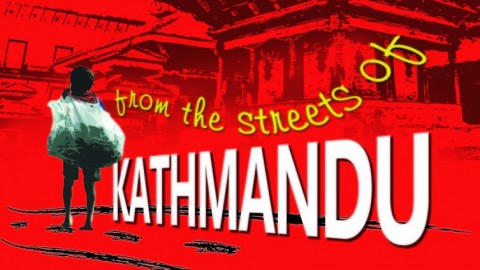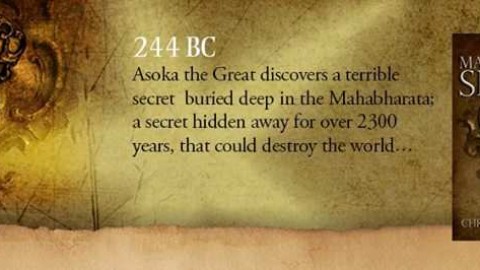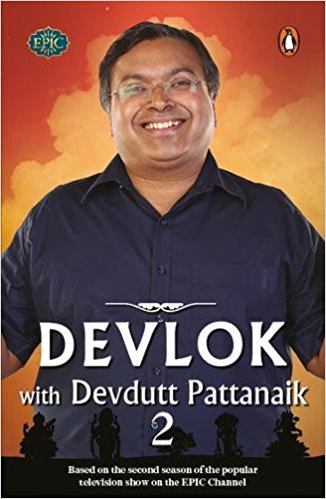
uddharedaatmanaatmaanam naatmaanamavasaadayeth |
aatmaiva hyaatmano bandhuraatmaiva ripuraatmanah ||
-Bhagwat Gita, Chapter 6, Verse 5.
Let a man raise himself by his own efforts. Let him not degrade himself.
Because a person’s best friend or his worst enemy is none other than his own self.
Devdutt Pattanaik, the epic analyzer of this claustrophobic Kalyug depicts in his unique style the demarcation between philosophy and psychology of mythology through his book Devlok 2.
The 1st chapter of the book displays the emerging difference between Meditation(Dhyan) and Insight(Darshan). Focused meditation explores one’s inner–strength, which gives an insight to the meditator for collective consciousness. But how does Dhyan differentiates its identity from Darshan? Which one is more important? If Dhyan is the process then Darshan is the result. But, how does a soul can differentiate between these two identities? Dhyan and Darshan exist like parallel harmony. Every page of the chapter will unleash the answers to emerging curiosity.
‘Surya Vansh’ and ‘Chandra Vansh’, these are very known words to any Indian who has seen mythological or epic serials in television. But what is their origin? Is there any link between the two?
Who is better? The 5th chapter will give the inevitable answers.
Bhagwad Gita, The Bible speaks of Atma/Soul. What are they ? 6th chapter deals with the delicate differences between Jibatma and Paratma. Nirvana in Buddhism to Moksha in Hinduism. Concept of Rebirth. The Birth cycle of a soul. One has to read the 6th chapter to garner knowledge about this occult matter.
The book unveils certain inquisitive, interesting facts and figures about Hanuman and Karna in different chapters. It tries to depict the truth behind Hanuman’s virtual immortality. Karna’s identity and uprising beyond all bottlenecks. His unique representation of Sudra and Kshyatria. Despite being a giver, a fighter and a gentleman, Karna’s tragic travesty.
Vedic Texts and ancient folklores depicts different images of Lakshmi and Saraswati. Devlok 2 gives a clear picture of the Hindu Godesses. Mothers and Women as mentioned in epic Ramayana and Mahabharata. Their contributory role to the then antagonistic Hindu society.
Devdutt tries to decipher certain characters from the ancient Vedic Texts like Yajati, Nahush, Debjani, Kuru, Puru etc. Those characters and their heirs create in future what is known as Ramayan and Mahabharata.
Moksha/Salvation/Nirvana- these words are used nowadays concurrently by any bloke. But there lies a subtle difference in their representation , which can only be understood if one goes through the book in a meticulous way. Although objective of these words might sound similar, but the path of Moksha and the other two are not likewise.
One must read this book to feel the spiritual enlightenment amidst materialistic predicament. People in rat-race runs for happiness, satisfaction. But true happiness can only be availed through peace, and peace can only be achieved through spiritual perception. So read the book to enhance your spiritual awareness.
Book Details :-
| Author: | Devdutt Pattanaik | ||
| Publisher: | Penguin Random House India | Publishing year: | 2017 |
| ISBN-13: | 9780143428435 | ISBN-10: | 0143428438 |
| Cover: | Paperback | Pages: | 200 |
| MRP: | Rs 199 | Buy From | Flipkart.com Amazon.in |
My Verdict
My Ratings
4.5
I'm Rating this book 4.5 out of 5 due to its plethora of information about mythology and mythological characters. These information will help us to upgrade self-realization , increase our spiritual knowledge and thus spread these gained knowledge among others.

